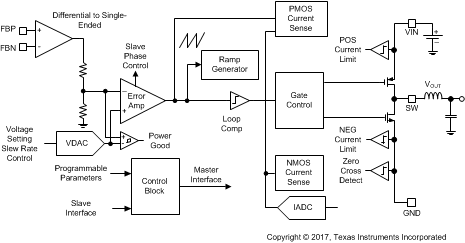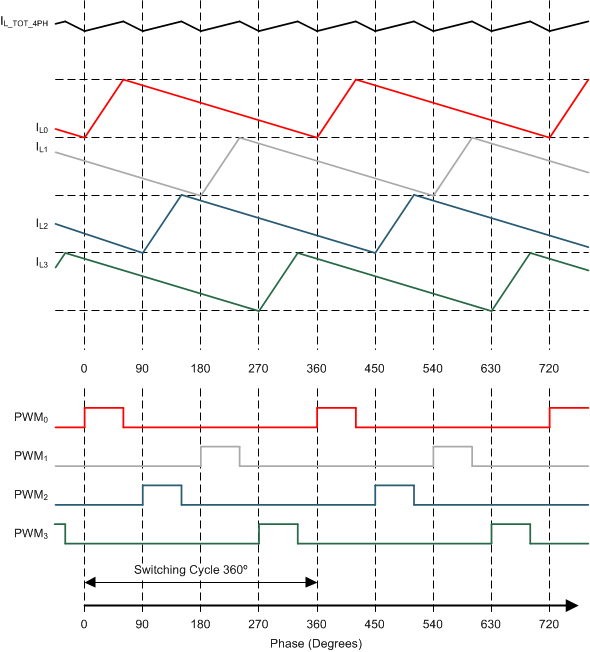SNVSA06C March 2015 – August 2018 LP8758-B0
PRODUCTION DATA.
- 1 Features
- 2 Applications
- 3 Description
- 4 Simplified Schematic
- 5 Revision History
- 6 Pin Configuration and Functions
- 7 Specifications
-
8 Detailed Description
- 8.1 Overview
- 8.2 Functional Block Diagram
- 8.3 Feature Description
- 8.4 Device Functional Modes
- 8.5 Programming
- 8.6
Register Maps
- 8.6.1
Register Descriptions
- 8.6.1.1 DEV_REV
- 8.6.1.2 OTP_REV
- 8.6.1.3 BUCK0_CTRL1
- 8.6.1.4 BUCK0_CTRL2
- 8.6.1.5 BUCK1_CTRL2
- 8.6.1.6 BUCK2_CTRL2
- 8.6.1.7 BUCK3_CTRL2
- 8.6.1.8 BUCK0_VOUT
- 8.6.1.9 BUCK0_FLOOR_VOUT
- 8.6.1.10 BUCK0_DELAY
- 8.6.1.11 RESET
- 8.6.1.12 CONFIG
- 8.6.1.13 INT_TOP
- 8.6.1.14 INT_BUCK_0_1
- 8.6.1.15 INT_BUCK_2_3
- 8.6.1.16 TOP_STAT
- 8.6.1.17 BUCK_0_1_STAT
- 8.6.1.18 BUCK_2_3_STAT
- 8.6.1.19 TOP_MASK
- 8.6.1.20 BUCK_0_1_MASK
- 8.6.1.21 BUCK_2_3_MASK
- 8.6.1.22 SEL_I_LOAD
- 8.6.1.23 I_LOAD_2
- 8.6.1.24 I_LOAD_1
- 8.6.1
Register Descriptions
- 9 Application and Implementation
- 10Power Supply Recommendations
- 11Layout
- 12Device and Documentation Support
- 13Mechanical, Packaging, and Orderable Information
Package Options
Mechanical Data (Package|Pins)
- YFF|35
Thermal pad, mechanical data (Package|Pins)
Orderable Information
8.3.1.1 Overview
A multi-phase synchronous buck converter offers several advantages over a single power stage converter. For application processor power delivery, lower ripple on the input and output currents and faster transient response to load steps are the most significant advantages. Also, since the load current is evenly shared among multiple channels, the heat generated is greatly reduced for each channel due to the fact that power loss is proportional to square of current. Physical size of the output inductor shrinks significantly due to this heat reduction. A block diagram of a single core is shown in Figure 7.
Interleaving switching action of the converters and channels in a four-phase configuration is illustrated in Figure 8.
 Figure 7. Detailed Block Diagram Showing One Core
Figure 7. Detailed Block Diagram Showing One Core  Figure 8. PWM Timings and Inductor Current Waveforms in 4-phase Configuration (1)
Figure 8. PWM Timings and Inductor Current Waveforms in 4-phase Configuration (1)